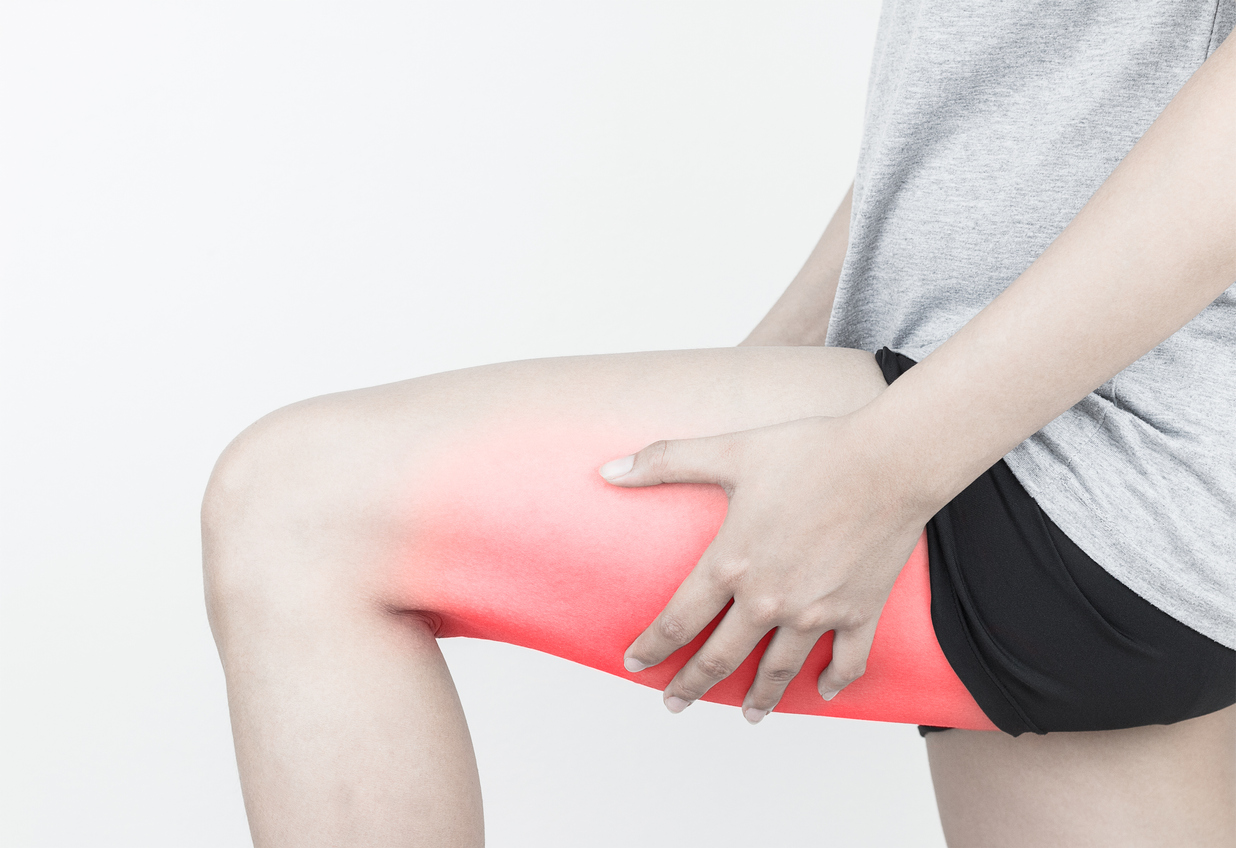[vc_row][vc_column width="1/1"][vc_column_text]By: Active Sports Therapy
Most active individuals at one time or another have experienced at least a minor hamstring injury. Whether it happened on the first day out at your adult slow pitch league as you sprinted to first base or perhaps from repetitive strain of the muscle while training for a marathon, one thing is for sure…it’s extremely painful.
Your hamstring muscle is a group of three muscles that run down the back of your thigh. Your body uses them to walk, run, and jump. So basically, when you’re on the move, so are your hamstrings! Because of this, hamstring strains, pulls, tears, and other injuries are quite common and the pain and discomfort brought on by a hamstring injury signals people to come in for an appointment.
If you have a pulled hamstring muscle, it will be assessed and graded, not unlike other types of muscle injuries. Here is what you can expect from each of the grades.
Grade 1 – The individual will have discomfort, but not an extreme amount of pain or disability from the injury. The tears in the muscle fibres will be miniscule and it is likely that the person just stretched their muscle a little too far.
Grade 2 – The individual will likely see a limit to what they are able to do because of their injury. Running and jumping will be painful and because the injury is a more severe, there might be more pain, and swelling or bruising at the site.
Grade 3 – This would be the most severe type of strain because there will actually be tears in the muscle fibres with surgery being a possibility depending on the overall severity. The person will have difficulty with walking and the condition will be very painful accompanied by swelling and bruising.
Treatment
The RICE method is what will be employed in most cases. If you’re unfamiliar with RICE it is as follows:
Rest – Don’t put weight on your leg if you don’t have to. Most hamstring strains will not need crutches but a higher grade may need them just to ensure the leg is getting the rest it needs.
Ice – This will help to reduce pain and swelling. Follow the rule of 10 minutes on and 10 minutes off several times per day for the first 48 to 72 hours.
Compression – Use a stretchy elastic bandage to wrap and compress the leg to help reduce swelling.
Elevation – When you’re laying down, prop your leg up comfortably on a pillow.
How to Prevent Hamstring Injuries
Preventing a hamstring injury is important because one of the greatest indicators of a future hamstring strain is simply that fact that you’ve had one in the past.
Warm up before activities - This includes some dynamic stretching and movement, such as light jogging, skating, or movements related to the activity you’re about to perform, as well as passive/static stretching.
Proper rest, recovery - Fatigue can often be the cause of a hamstring injury so ensure that you’re properly rested for the activity at hand with adequate recovery time in between activities.
Training and preparation - Whether it’s a long hike, a 10k run, or sprinting the bases, you need to ensure your body is prepared by keeping your strength up.
Running Mechanics - If your running mechanics are off, you could be putting more strain on your hamstrings than necessary. Visit a professional to have your stride assessed and you may reduce the incidence of hamstring injuries.
At Active Sports Therapy we can help with this type of injury through various soft tissue treatments including active release therapy, deep tissue massage as well as dry needling. Low intensity laser therapy will often speed up the rate of recovery. Please call us to book an appointment today!
*This blog is not intended to officially establish a physician-patient relationship, to replace the services of a trained physician, naturopathic doctor, physical therapist or chiropractor or otherwise to be a substitute for professional medical advice, diagnosis, or treatment. [/vc_column_text][/vc_column][/vc_row]


